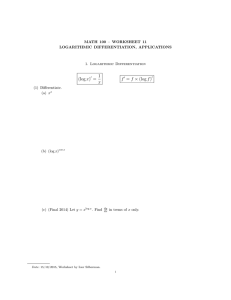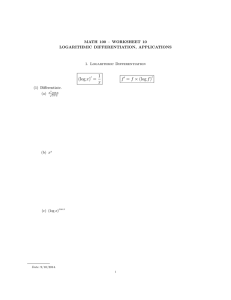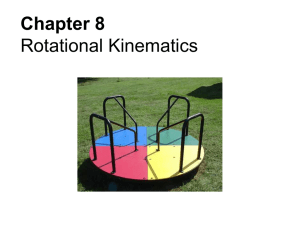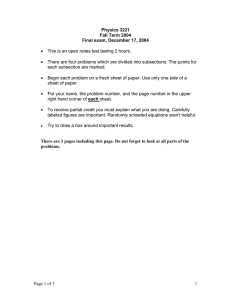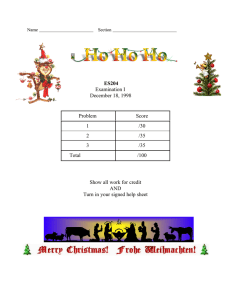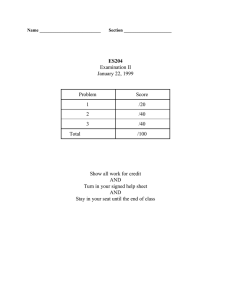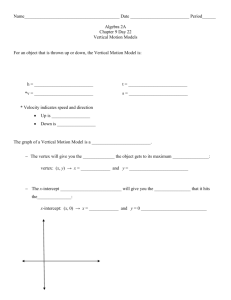Name: ______________________________________ Section _________ ... ES 204 Mechanical Systems Exam 2
advertisement
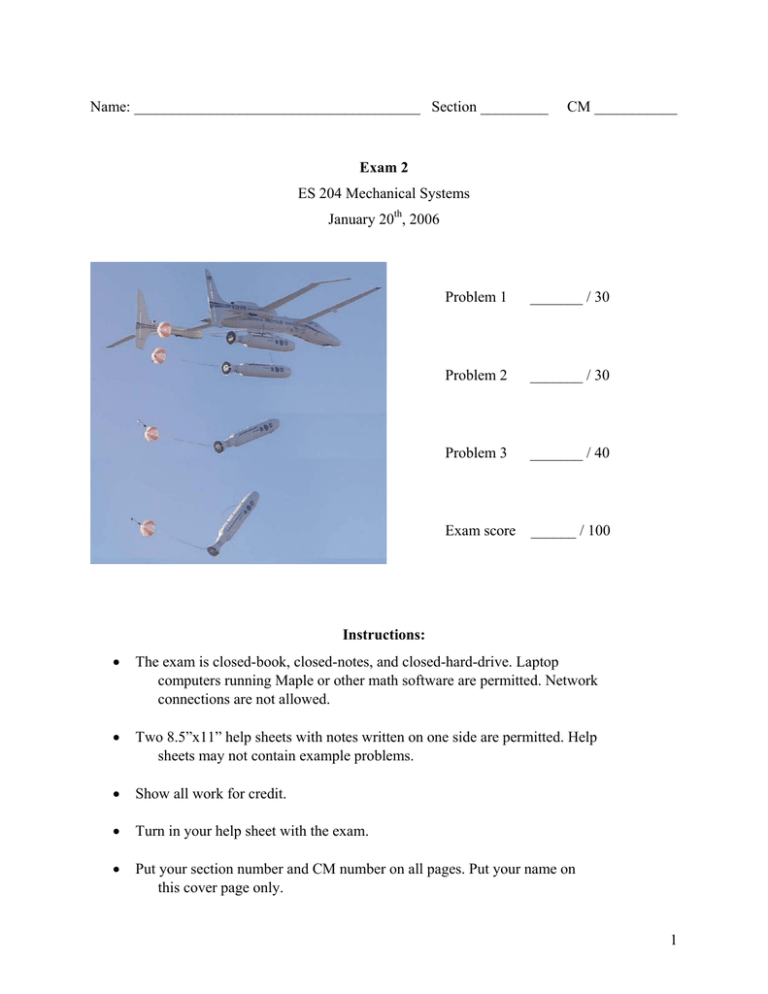
Name: ______________________________________ Section _________ CM ___________ Exam 2 ES 204 Mechanical Systems January 20th, 2006 Problem 1 _______ / 30 Problem 2 _______ / 30 Problem 3 _______ / 40 Exam score ______ / 100 Instructions: • The exam is closed-book, closed-notes, and closed-hard-drive. Laptop computers running Maple or other math software are permitted. Network connections are not allowed. • Two 8.5”x11” help sheets with notes written on one side are permitted. Help sheets may not contain example problems. • Show all work for credit. • Turn in your help sheet with the exam. • Put your section number and CM number on all pages. Put your name on this cover page only. 1 ES204 Exam 2 20 Jan 06 Section ___________ CM___________ Problem 1 1a. [8 points] The uniform bar AB has an angular velocity of 4 rad/s CCW about A. Calculate the bar’s angular momentum, L about the pin at A. IG = 2 kg-m2, and m = 6 kg. B A 40° 2m 1b. [6 points] Locate the instantaneous center for each body labeled AB. A C M1 D LAB 5" 30.0° B M2 BB 5" LBC 5" O 60.0° C A 3" 3" C A 7" 2 ES204 Exam 2 20 Jan 06 Section ___________ CM___________ 1c. [10 points] Two homogeneous slender rods AB and BC are welded perpendicular to each other at B. If the welded rods have an angular velocity of 1 rad/s CCW, determine the kinetic energy of the system using mAB= 1 slug, mBC = 2 slug, IAB = 4/3 slug-ft2, and IBC = 6 slug-ft2. A 4 ft G G B C 1 rad/s 6 ft 3 ES204 Exam 2 20 Jan 06 Section ___________ CM___________ 1d. [6 points] The ferris wheel has an outer radius ro of 24 ft, a clockwise angular velocity of 1/2 rad/s and a counter-clockwise angular acceleration of 1/3 rad/s2. Determine the acceleration of the passenger at F, directly above the hub. Express your answer in x-y coordinates. y x 4 ES204 Exam 2 20 Jan 06 Section ___________ CM___________ Problem 2 ‘t/LAD’ [30 points] The trapeze / lanyard air drop (t/LAD) launch is an innovative method for airborne launch of a payload carrying rocket (shown on cover). The release sequence involves several steps. Initially, the rocket body drops freely from the carrier aircraft (Figure a)) until the 6 ft lanyard stops the vertical motion of point A (Figure b)). Assume point A is a free to move horizontally when the lanyard is fully extended. Find the equations required to determine: The rocket’s angular velocity immediately after the lanyard becomes taut (Figure b)). Your solution should consist of a table of unknowns, and a numbered collection of equations. a) Hint: Consider the carrier aircraft velocity to be zero (the test is done in a wind tunnel). The mass of the rocket, the rocket’s mass moment of inertia, and distance xcg are all known parameters. b) 5 ES204 Exam 2 20 Jan 06 Section ___________ CM___________ 6 ES204 Exam 2 20 Jan 06 Section ___________ CM___________ Problem 3 ‘t/LAD’ part deux [40 points] After the lanyard is fully extended the rocket rotates to approximately 90o. During the rotation, from horizontal to vertical, aerodynamic forces exert a clockwise moment equal to 1200sin(θ) ft-lb (Figure b)). Just after reaching vertical, the lanyard is cut, and a parachute applies an impulse (Figure c)). b) c) Assume, for this problem, the angular velocity at horizontal is known and treat point A as a fixed point (pinned). The mass, mass moment of inertia and dimensions are known as in Problem 2. Find the equations required to determine: (i) The rocket’s angular velocity when it reaches vertical (Figure b)). (ii) The reactions at A when the rocket reaches vertical (Figure b)). (iii) The impulse required to stop the rocket’s angular velocity at vertical. Assume the lanyard force and aerodynamic force is zero (Figure c)). Your solution should consist of a table of unknowns/equations and a numbered collection of equations. 7 ES204 Exam 2 20 Jan 06 Section ___________ CM___________ 8
